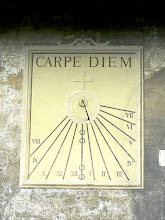LUNAR DOUBLE-IMPACT ON OCT.9, 2009


1.- A computer visualization of LCROSS hitting the moon on Oct. 9, 2009
2.- Moon's south pole map as it will appear on the night of the impact.
LUNAR DOUBLE-IMPACT ON OCT.9, 2009
__________________________________
The impact site is crater CABEUS, near de Moon's South pole.
NASA is guiding the LCROSS (Lunar Crater Observation + Sensing Sstellite) and its CBR (Centaur Booster Rocket) into the CABEUS Crater's floor for a spectacular Double-Impact designed to <
The Centaur rocket will strike first, transforming 2.200 kgs. of mass and 10 billion joules of kinetic energy into a blinding flash of heat and light.
Close behind, the Centaur booster (the mother-ship) will photograph the collision, and then, fly right through the debris plume.
Onboard spectometers will analyze the su nlit plume for signs of water (H2O), water fragments (OH), salts, clays, hydrated minerals and assorted organic molecules.
If there is water there, or anything else interesting, we'll find it, says the mission's principal investigator.
Four minutes after the Centaur "lands," the 700 kg LCROSS satellite will strike nearby, sending another, smaller debris plume over the rim of Cabeus.
The Hubble Space Telescope, the Lunar Reconnaissance Orbiter (LRO), and hundreds of telescopes great and small on Earth will scrutinize the two plumes, looking for signs of water and the unexpected.
And that brings us to the second way to see the show:
Grab your own telescope if you are an amateur.
The initial explosions will probably be hidden behind crater walls, but the plumes will rise high enough above the crater's rim to be seen from Earth.
The Pacific Ocean and western parts of North America are favored with darkness and a good view of the Moon at the time of impact.
Hawaii is the best place to be, with Pacific coast states of the USA a close second. Any place west of the Mississippi River, however, is a potential observing site.
When the plumes emerge from Cabeus, they will be illuminated by sunshine streaming over the polar terrain.
The crater itself will be in the dark, however, permanently shadowed by its own walls.
"That's good," say investigators.
"The crater's shadows will provide a dark backdrop for viewing the sunlit plumes."
In an earlier stage of mission planning, scientists hoped to strike a crater closer to the Moon's limb so that the plumes would billow out against the dark night sky, providing maximum contrast for observers on Earth.
However, recent data from NASA's Lunar Reconnaissance Orbiter, Japan's Kaguya spacecraft and India's Chandrayaan-1 probe, altered those plans.
"We've just learned that Cabeus may contain relatively-rich deposits of hydrogen and/or frozen water,".
"Cabeus is not as close to the lunar limb as we would have liked, but it seems to offer us the best chance of hitting H2O."
The LCROSS team hopes many people (amateurs and professionals alike) will observe and photograph the plumes. "The more eyes the better."
"Remember, we've never done this before.
We're not 100% sure what will happen, and big surprises are possible."
==================================


0 Comments:
Post a Comment
<< Home